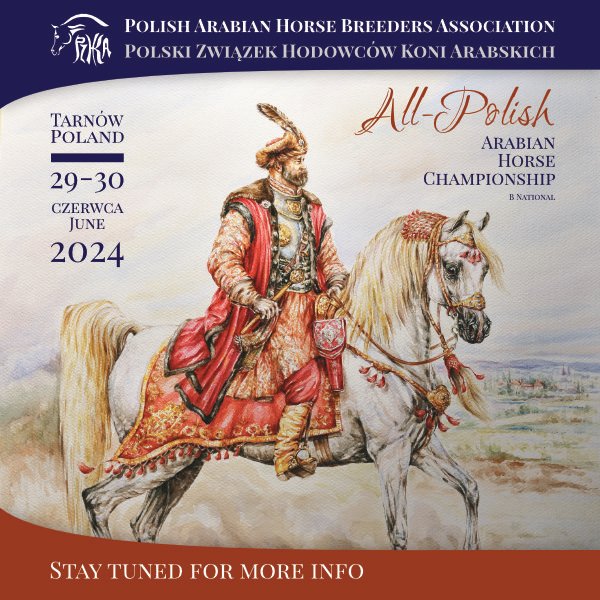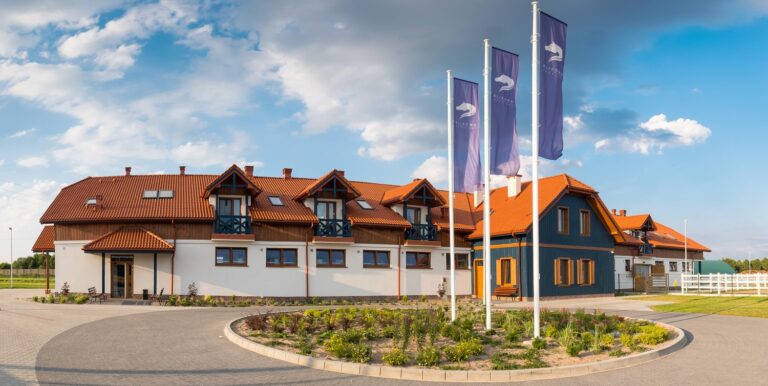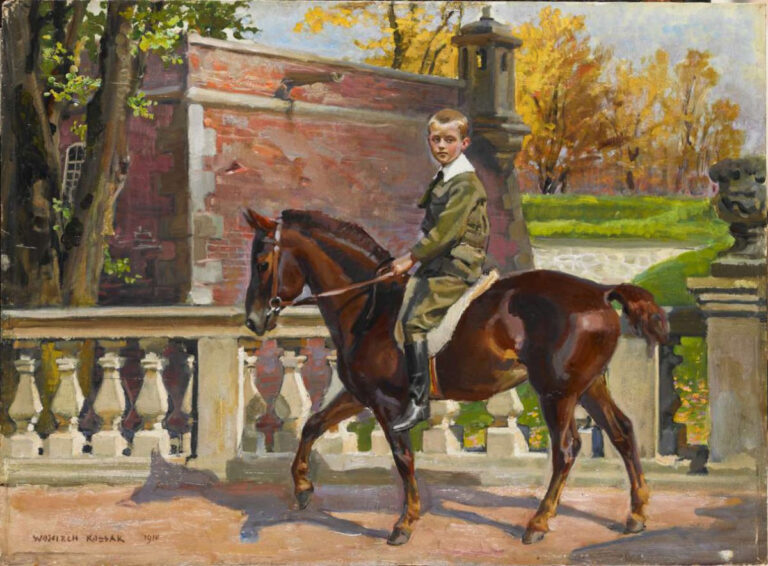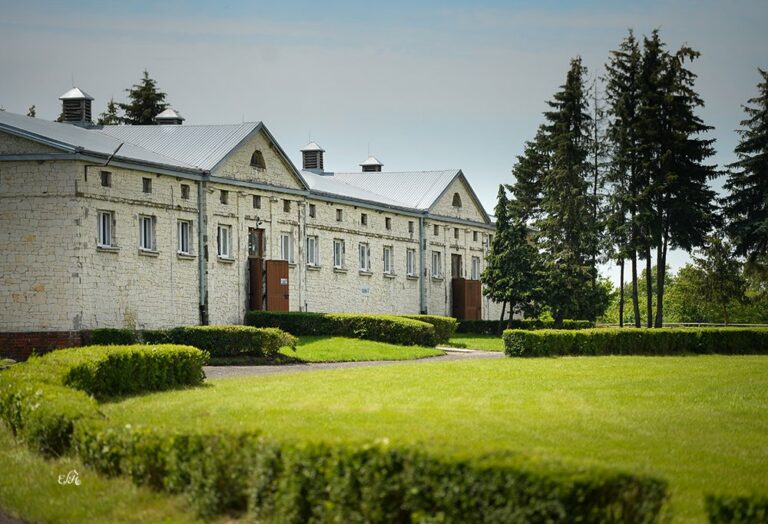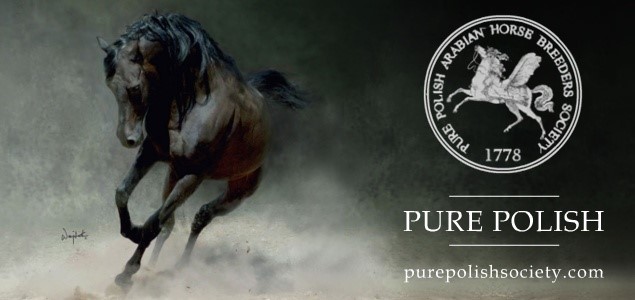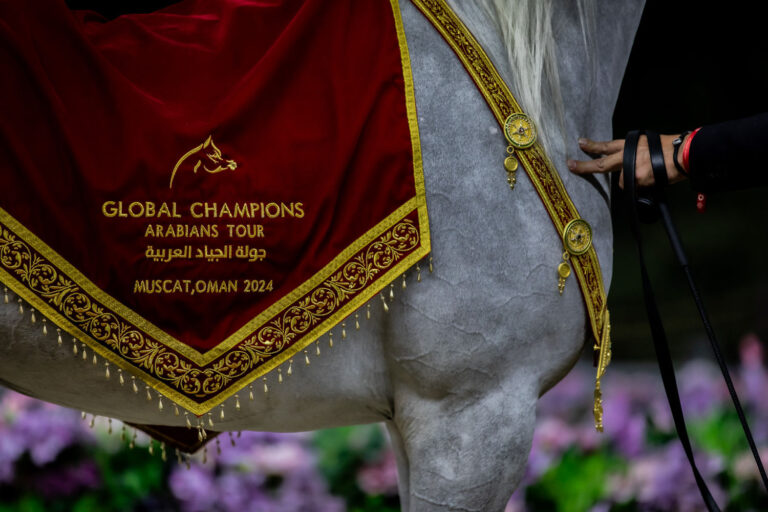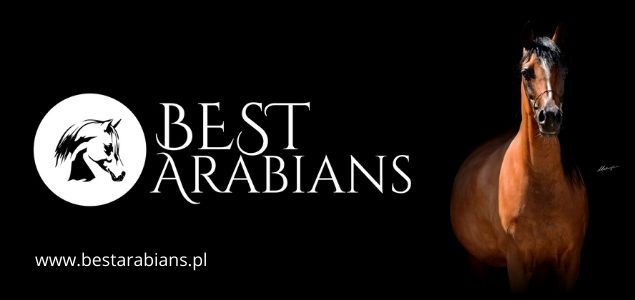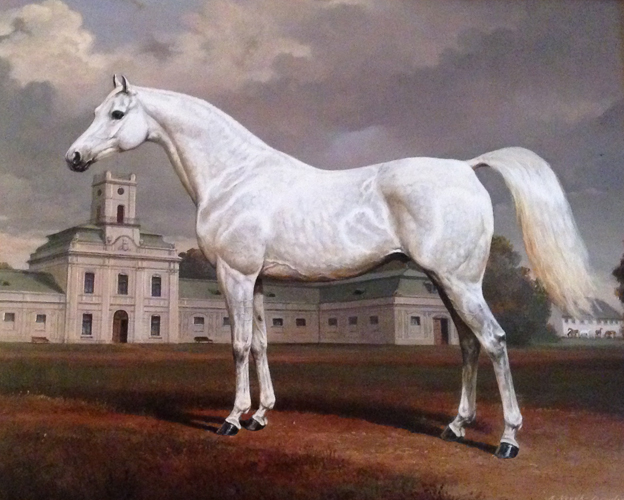
In communist Poland an entire governmental machinery was engaged in erasing memories. Despite this the remembrance has endured. Is it important today, that SKOWRONEK was sold after a successful bison hunt or that during the Nazi occupation the resistant movement received weapons by means of a carriage drawn by four grey Arabians? “No”, some will say. But without testimonies there would be no history. And great history comes from seemingly small events.
1778 – a symbolic beginning
The general belief among foreign Arabian horse enthusiasts is such that Polish Arabian horses, known today in the world as „Pure Polish”, come from state studs, which look after the most valuable breeding material and maintain the most significant lines and families. „In Spain the general opinion is that Polish private breeders do not possess good breeding material, because they cannot afford the best, expensive mares offered by the state studs at the Janów’s auction”, I wrote a year ago upon returning from the Spanish National Championships. So perhaps it is worth recalling that there wouldn’t be any state breeding today without private breeding, once mighty and later greatly weakened by World War I and the Bolshevik Revolution and finally completely destroyed as a result of World War II and the actions of the communist authorities.
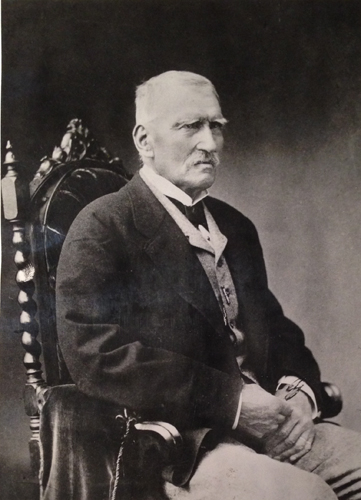
It were the horses from private breedings that formed the foundations of the successes of modern horses from the Polish state studs. Arabian or – as they used to be called – oriental horses were used in Poland since the 16th century, but 1778 is considered as the symbolic date which marks the beginning of Arabian horse breeding, when Crown Grand Hetman, Franciszek Ksawery Branicki (1729–1819) established a stud in the Szamrajówka khutor, part of the Biała Cerkiew estates in the Ukraine. It was „the oldest stud, initially breeding oriental horses and later pure bred Arabians, about which concrete historic information has been retained”, writes Professor Witold Pruski in his epoch work “Two centuries of Polish Arabian horse breeding (1778–1978) and its successes worldwide”. The 19th century saw an impressive development of magnate stud on the Eastern Borderlands of the Republic of Poland. Sławuta Stud of the Sanguszko princes, with its seat in Chrestówka in the Volhynia region, established ca. 1506, is the source of valuable damlines, including Szweykowska ca. 1803, Wołoszka ca. 1810, Ukrainka ca. 1815 or Milordka ca. 1810. Biała Cerkiew of the Branicki clan is the birth place of the mare Szamrajówka 1810, who became the foundress of one of the most valuable damlines on the world breeding scene, known today as the “P” line. When creating the Arabian section in the state stud of Janów Podlaski (1919) the horses were purchased from well-known private breeders. “Arabian horses in Janów Podlaski Stud descend from the famous herds of the Dzieduszycki counts and Sanguszko princes”, wrote Director Andrzej Krzyształowicz in the 1948 published leaflet titled “A profile of the State Stud at Janów Podlaski”. Many epoch-making horses that are found in the pedigrees of today’s stars in Poland and abroad are horses descending from Polish private breeding or which had been obtained by private breeders: the Antoniny-bred Skowronek 1909 (Ibrahim d.b. – Jaskółka/Rymnik), Biała Cerkiew’s Ursus 1908 (Dahman Unir d.b. – Hagar/Hamdani I), Breniów’s Amurath Sahib 1932 (Amurath II – Sahiba/Nana Sahib) or the desert import Kuhailan Haifi d.b. of Gumniska.
The Potocki clan and Antoniny. Bison hunting saves Skowronek
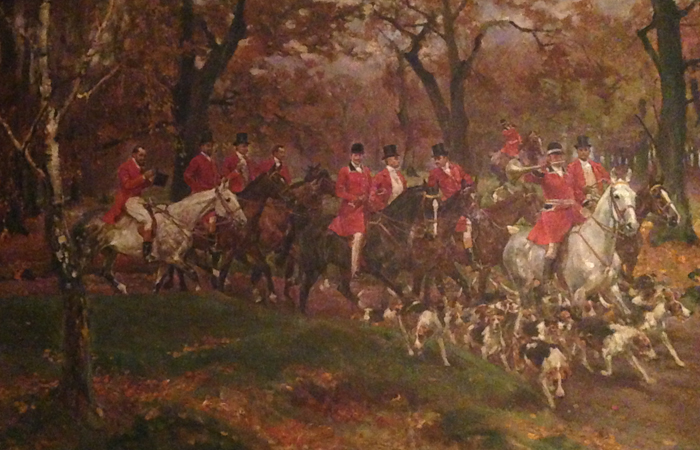
The descendants of the families which wrote down beautiful chapters in the history of Polish Arabian horse breeding still tend to the remembrance of family traditions. MAREK POTOCKI, a grandson of Count Józef Potocki of Antoniny (once the summer residence of the Sanguszko princes, later the seat of the younger son of Maria Alfredowa Potocka of the Sanguszko clan), readily shares his recollections. “In my family the history of breeding dates back to the early 19th century, the times of Emir Rzewuski”, he says. “I personally never had anything to do with horses, but I remember a lot from my childhood. The story about the sale of Skowronek is alive in my family till this day. It took place after one of the hunts in Antoniny. My grandfather Józef Potocki gave an announcement in international papers that he would “sell the rights to slay a bison” (because the old bison killed young bulls). It was answered by an American by the name of Winans. The Antoniny staff professionally pointed out the large bull for him. Winans shot from a winchester. The bison shed dust like an old carpet, but since he was large and strong he did not fall down. When he was finally slain, my grandfather invited Winans inside and showed him around the stables. The American asked whether he had any yearlings for sale. My grandfather took him to Skowronek and the visitor purchased the horse right there and then! Did they negotiate the price? I doubt it, I think the American offered a decent priced up front. The 2 thousand dollars in gold which he paid was a large sum at the time. And so Skowronek travelled to America*. He was there for a relatively short time, maybe up to 1920 or 1921. He was later purchased by a well-known Arabian breeder, Lady Wentworth. She used him as a sire. My father, Roman Potocki, said she took 200 guineas for a successful breeding, which was a large amount in those times. Skowronek lived for a long time, as far as the late 30s and ended his life as a distinguished senior”. If not for that memorable hunt, perhaps Skowronek would never had been sold and would’ve been lost like many other horses in the upcoming conflagration…

Marek Potocki was born in Warsaw (in the Potocki Palace, where today the Ministry of Culture is located), a city to which he returned after 40 years spent abroad. He has a house full of heirlooms. Our host tends to traces of the past with great care, including a perfectly kept issue of “Country Illustrated” from 1911, which holds a large article about Antoniny. “Antoniny is a book of many centuries, dozen generations (…) Vast lands. It has endured a lot and seen a lot. Those that walked over this soil include the Ostrogski, Zasławski, Koniecpolski, Wiśniowiecki, Potocki, Sanguszko, Tyszkiewcz clans. Also [King] Sobieski and [Crown Grand Hetman] Żółkiewski (…) So there are memories floating around about post-Mohort times, about Emir Rzewuski who was a frequent visitor together with his team”, the author begins his tale. He devoted many pages to the Antoniny herd. “Its foundation was the purest Eastern breed that we have ever had in Europe, imported and selected over years with great care and with great expenditures by the former owner and founder of the herd, Prince Roman Sanguszko of Sławuta, a widely known expert and horse enthusiast of a grandeur style”. A separate paragraph was devoted to Skowronek’s sire, Ibrahim 1899, imported from the East to Odessa and later purchased to Antoniny: “He is small, has a lot of type, a pretty neck, head, well rounded ribs. The topline is not exactly straight, but also not hollow, the cannon bone is short and wide, the fetlocks normal, though the right one is slightly set towards outside, the knees are a bit too close”.
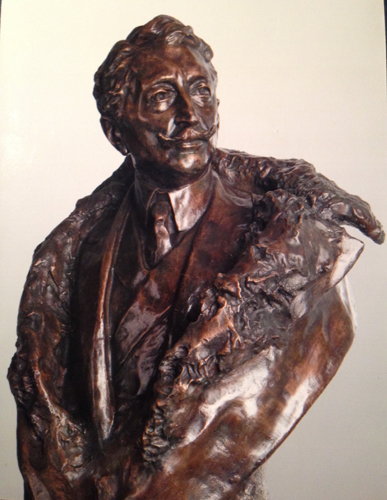
Fate brought a tragic end to Antoniny. It was described in the book titled “The Blaze” published in 1922 by Zofia Kossak-Szczucka (1889–1968), a granddaughter of painter Juliusz Kossak, one of the most outstanding Polish portraitists of equines, among them Arabians. In 1918 she personally witnessed the annihilation of the entire estate, palace and farm buildings, including the stables by marauders returning from the war front, encouraged by Bolshevist leaders. Only 20 Arabians born in Antoniny escaped the destruction. Dr Edward Skorkowski in his foreword of the 1st volume of the Polish Arabian Stud Book (1926) wrote: “What remained from the Antoniny Stud is only that which workers, loyal to their employers, hid in the woods from the enraged with Bolshevik principles canaille. Currently that which remained, since the Antoniny estate has found itself on the Soviet side, is located in Beheń in the Volhynia region, an estate purchased several years ago by the present owners of the Antoniny Stud, Roman and Count Józef Potocki”. Just 21 years after these tragic events the family was again condemned to exile. “The Red Army reached our estate in the East on September 19th, 1939. Paying in gold, we were able to make it through the so-called green border, which ran more or less on the Bug River between Germany and Russia. We escaped to the estate of my distaff grandfather’s estate, but we had to run again when the Gestapo placed him in a concentration camp. That’s when we went to Łańcut, where we stayed until 1945. After that we had to flee again. I left Poland in 1961 at the age of 23”, recalls Marek Potocki.
The Branicki clan and Biała Cerkiew. Aristocrats held in captivity by the Bedouins

It was not just Antoniny that fell victim to historic disasters, but also many other studs, including the distinguished Sławuta. The day of annihilation came on November 1st, 1917. This is how the event was described by Dr Skorkowski in the Stud Book: “As if by some ill fate the famous stud at Chrestówka ceased to exist, plundered by the Bolshevik hordes in 1917. It ceased to exist together with the splendid Polish residence on the borderlands – Sławuta – upon the ruins of which, loyal to his land to the very end, not spared by the Bolshevik savages, perished the over 85 year old man – Prince Roman Sanguszko”.
In Biała Cerkiew Stud of the Branicki family, as Skorkowski states, more than sixty Arabian mares went under the machine gun – as “equine aristocracy”. The Biała Cerkiew stud book, kept and managed unceasingly for 115 years (since 1803), where the amount of bloodstock was written down, as well as the pedigrees and a register of the imported stallions, was lost.
„And so were lost the achievements of several generations of breeders from the years 1778–1918 and everything had to be started from the beginning” – with that Professor Pruski summed up his extremely short chapter dedicated to this period, while Dr. Skorkowski noted: „Only 10% of the pre-war stock of our Arabian breeding was saved: from over 500 broodmares of our Arabian studs – as few as 56 were registered in the 1st Section of the Polish Arabian Stud Book. These 56 mares are the foundations of the breeding of the Polish Arabian, from which this breeding will be reborn – because it cannot perish, since it produced Melpomena and Skowronek”.
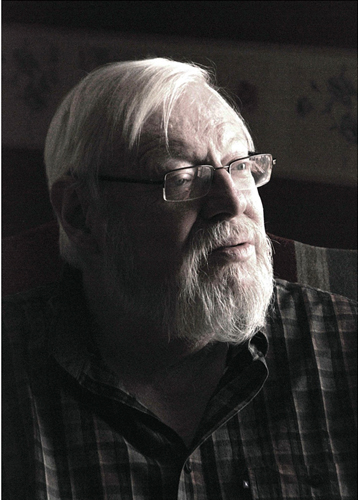
The Branicki family of today no longer breed horses. “The memory of Arabian horse breeding in our family is still alive, but it is more of a sort of legend, often lacking details”, says ADAM RYBIŃSKI, a descendant of the Branicki family from Wilanów, founder of the Adam and Beata Branicki foundation, which purpose is historic research, also on Arabian horse breeding. “I know from family tradition that the Szamrajówka estate was home to horses from Egypt, brought there by General Józef Zajączek, who accompanied Napoleon Bonaparte during his famous expedition. Such were the beginnings. Later, in search of pure bred Arabians, the hetman’s grandsons – Władysław and Konstanty Branicki – traversed the Arabian Peninsula. During one of such expeditions they were captured by Bedouins and spent several difficult weeks in captivity. Luckily it was all about ransom, so when they managed to hand over the money they were set free and returned to Poland with the purchased horses. The Branicki clan bred Arabian horses unceasingly up to the October Revolution, when their Ukrainian estates were confiscated. From what I know they were unable to bring to Poland the Biała Cerkiew Arabians in order to continue their breeding work”.
The magnate families, with their spread out European connections, were often related and supported each other. “Up to World War I there were 8, 10, perhaps 12 families which married between themselves. This was determined first of all by the significance of the name and second – by the wealth of the estates. Well known in our family was my great-grandmother’s answer to the question asked by her 14 year old daughter: who did you designate for me, lady mother? Don’t you ponder on things that shouldn’t interest you”, Marek Potocki recalls the family anecdote. Yet these families survived not only thanks to the relationships between their bloodlines, but also thanks to their resourcefulness. “There was a lot of talk about my ancestors that they often visited Monte Carlo and lost entire fortunes. It is not true. My grandfather Józef was an extremely smart person,
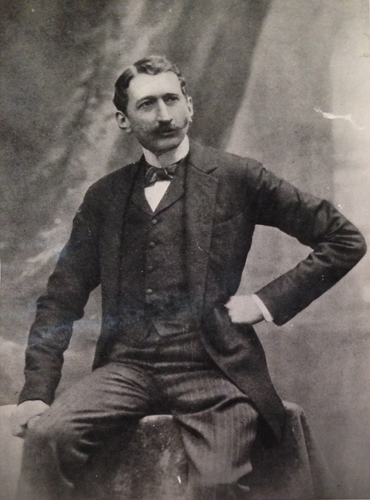
aptly carrying out his businesses. The horses were perhaps not a large income, but they brought an income nevertheless. Only if he assumed beforehand that something would simply be an expenditure, then so it was. For example he fenced 10 thousand hectares of forest in Antoniny (he named this area “Pilawin” after our Pilawa coat of arms) and gathered forest game typical for that part of Volhynia. There was an entire staff of foresters that looked after those animals. All of that was slain in 1918. However I wanted to emphasize that he was a man who knew the value of money and if he did something then it had to bring a greater or smaller income”.
World War II. Weapons in an Arabian-drawn carriage
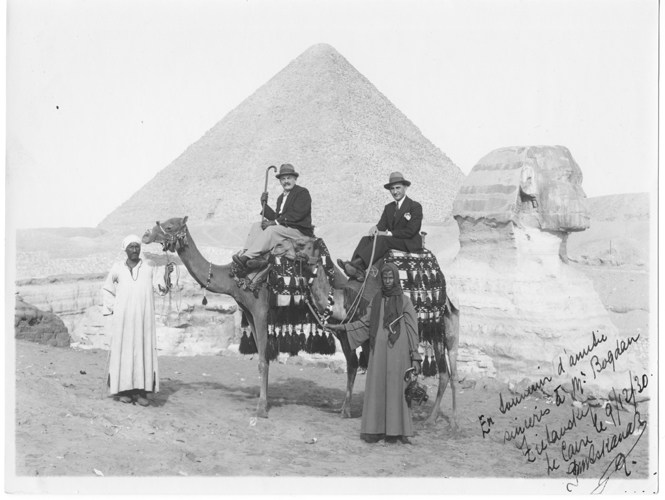
The shifting of the borders after World War I determined the fact that many studs, especially the Borderland ones, were never rebuilt. New studs were established, for example of the Bąkowski family in Kraśnica, where Bałałajka 1941 was born, dam of Bask and Bandola, called “the Queen of Polish Arabians”. Sometimes there were attempts at restoring the former greatness from the remains that were rescued from the historic tragedy.
Roman Sanguszko of Gumniska engaged great funds to restore the greatness of his breeding. After World War I just 8 broodmares and 3 stallions survived. In 1930 the stud’s manager, Bogdan Ziętarski, set off on an expedition to Arabia, from where, among others, he brought a stallion of epochal significance – Kuhailan Haifi d.b. 1923, found among the Ruala Bedouins. His son Ofir (considered his best get) sired the “grand four”: Wielki Szlem, Witraż, Witeź II and Wyrwidąb. In turn Wielki Szlem was father to Czort, sire of El Paso. Whereas Witraż made a name for himself as the sire of Celebes and Bask. The second import, Kuhailan Afas, became famous as the ancestor of Comet 1953.
Adam Rybiński recounts: „Arabian horse breeding was again taken up by my grandfather, Adam Branicki. He imported Arabians to his Roś estate located on the lands of today’s Belarus and began creating the core herd. Arabian horses appear in my grandmother’s, Beata Branicka, recollections from her childhood. They were a symbol of beauty and her vacations spent in Russia. Several Arabians were also stabled in Wilanów, the family’s main abode. They served as saddle horses. Apart from that all of Warsaw knew the grey Arabians that pulled the great Wilanów landau carriage. During the occupation my grandparent’s car was confiscated. As a result my mom and her sisters rode to school in this landau. My mom was ashamed of this and demanded that the carriage stopped somewhere around a corner so that her friends and teachers wouldn’t see her getting out of a huge, adorned in many coat of arms’ carriage from a period past. A carriage, let’s add, drawn by four grey Arabian horses. This story also has a second side to it. The carriage, due to its dimensions and uniqueness, became the perfect cover-up for transporting weapons to the Polish underground movement or the wounded during the occupation. German soldiers felt respect towards this strange vehicle and let it through without searching it. The same Arabian horses later pulled a regular wagon when my grandparents were thrown out of Wilanów in 1945”.
Behind the iron curtain. An attempt at memory erasing
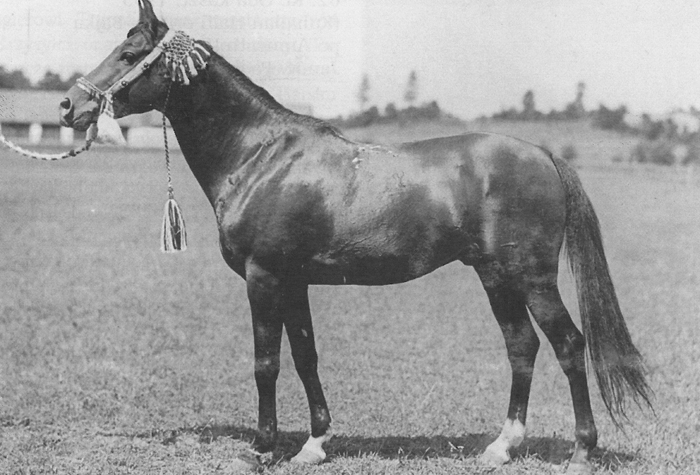
World War II definitely determined the end of a certain era. The war stories of Polish Arabians are the subject of many articles and books. After the war the state studs and the people associated with them without a doubt played a huge role in the restoration of Arabian horse breeding in Poland. Their services in this regard cannot be stressed enough.
However it was none other than the government that contributed to further disasters which befell the country and its breeding under the new political system. Under a special decree agriculture farms of an area of 50 hectares or more (in 3 provinces – above 100 ha) were nationalized. Then came a time of bloody repressions, persecutions of people with different political views, divestitures of private property, nationalizations of land, factories and houses. Courts sentenced people who fought against the German occupant to prison or even quite often to death. The political police brutally crushed the opponents of the regime. The “iron curtain” fell, cutting Poland off from the Western world for many years.
There was also an attempt at erasing the memory about times past. It was forbidden to speak about the annihilation which took place in 1917–1918. A characteristic testimony of such approach was the previously quoted work of Professor Witold Pruski (published in 1983). The chapter “Damages caused by World War I” takes up less than one page of print. Censorship allowed only for the following sentence: “When Poland regained its national sovereignty in 1918 the horses to be found on its lands were very scarce amounts from Sławuta and Antoniny, whereas nothing was left from the Biała Cerkiew and other borderland studs”. It was not permitted to mention any damages and massacres committed by the Bolshevik invaders.
Władysław Gomułka and a hatred towards horses
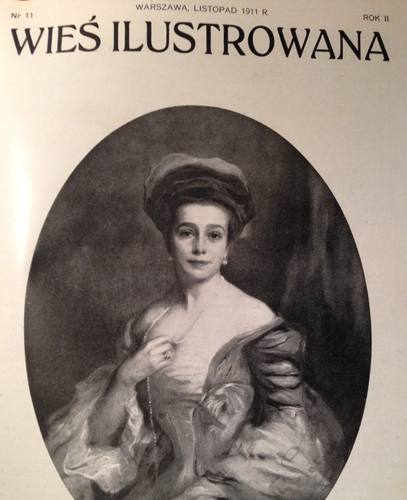
The Arabian horse was treated by the new authorities with suspicion, as a bourgeois relic, a whim of the former ruling class which ceased to exist; as a luxurious good redundant in the new proletariat system. Only draught horses, indispensable in agriculture and transport, were appreciated – under the condition that they did not belong to private owners. Regardless of their pedigree, all horses which survived the war became property of the state.
Admittedly, Anna Bąkowska, the owner of Kraśnica Stud, reclaimed her two extremely valuable mares, including Bałałajka 1941, the later dam of Bandola and the world famous stallion Bask, but both mares were soon taken to the state stud at Albigowa. “The acquiring of the grey mare Bałałajka was a fortunate coincidence”, so wrote about this incident Professor Witold Pruski in the chapter on Albigowa. The term “acquiring” for those in the know simply meant robbery. Anna Bąkowska was the only one among private breeders who won compensation from the government. It amounted to the price of a draught horse of that time. In 1948 Anna together with her daughter Ewa were arrested on a charge of helping the Home Army, a Polish resistance organization during World War II.
Another legendary Polish breeder, Bogdan Ziętarski, was sent to Milicz Agricultural State Farm to work with draught horses. He died forgotten in 1958.
It is impossible to count how many valuable horses were lost in the state studs, which theoretically were to maintain all the different damlines, due to communist orders. The broodmares were assigned “job posts”. Many horses didn’t receive any chance and were simply sent to slaughter. As Anna Dębska, a sculptor and breeder, who fought for years to save at least some of the valuable specimens claims, much responsibility for this lay in the hands of Władysław Gomułka – the First Secretary of the Communist Party during the years 1956–1970 – who for reasons known only to himself hated horses.
It was not until 1986 that something changed. For the first time a Polish private breeder received permission to purchase a mare at the Janów Podlaski auction. Krystyna Duda bought the mares Wiklina 1983 and Aktorka 1984. But although from that moment on private breeders could “officially” own Arabians, many years still had to pass before private breeding in Poland exceeded state studs in terms of numbers. In order to compete in quality private breeders work hard, referring to the legacy of their great ancestors. And it seems that Polish private Arabian horse breeding
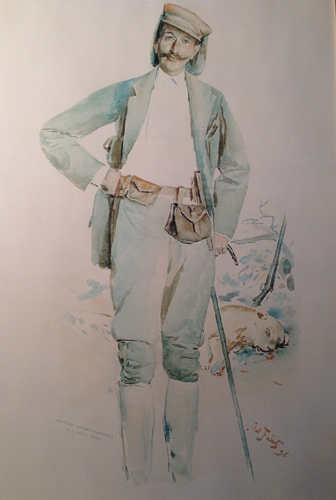
stands a good chance at being fully restored. Marek Potocki sums up: “The state by definition guarantees a stability, which the private breeders cannot give, because often the next generation does not want to continue their fathers’ work. But everything depends on the kind of state and the kind of system. Under normal conditions the state, for example in England, Canada or the US, honors private property. In systems such as Nazism or communism everything is destroyed. I hope that it will never happen in Poland again”.
———————————————-
*Historical sources don’t mention the travel of Skowronek to the U.S. This is his story described by Carol W. Mulder (“The Crabbet Influence” 05/06 1989 quoted on crabbet.com):
Skowronek was taken to England in 1913, at age 5, by Walter Winans, an American who was a Hackney exhibitor, game hunter, and artist. Mr. Winans had originally gone to Poland to hunt game at Count Potocki’s private animal park, Pilawin, located north of Antoniny. While with the Potockis he tried to buy a team of half-Arabian driving horses. When that proved impossible he bought Skowronek instead, at the suggestion of Count Roman Potocki. The price was 150 pounds. Later, at Crabbet, Skowronek’s stud fee was 120 pounds – nearly the amount of his original price. Mr. Winans used Skowronek as a hack and as a model for his bronzes.
In 1914, when Skowronek was 6, he was sold to Mr. Webb-Ware who also used him as a hack. In 1919, at age 11, Skowronek became the property of H.V. Musgrave Clark and was used at stud for the first time. Mr. Clark also entered Skowronek in Arabian classes in some shows; in this way he came to the attention of some other English Arabian breeders, including Lady Wentworth of Crabbet Stud.
In 1920, when Skowronek was 12, Lady Wentworth acquired Skowronek and he eventually became almost legendarily famous. Mr. Clark always felt that Lady Wentworth purchased Skowronek by ruse. He [Clark] seems to have sold the horse – whose potential he, himself, obviously failed to recognize – to an American agent for export, but the export order was canceled and Clark found Lady Wentworth the owner of Skowronek. Lady Wentworth must be given full credit for recognizing the touch of greatness in Skowronek and for providing him with his opportunity to prove himself. Up to 1920, when she acquired him, nobody in his life had fully perceived his worth to the Arabian breed. As for her manner of buying Skowronek – Lady Wentworth may have felt it was her only way to get the horse for, if Clark had known of her desire to own him, he may have taken a closer look at the horse for himself or may perhaps even have not wanted to let his rival Arabian breeder own Skowronek. In any case, Lady Wentworth’s purchase of Skowronek was a point of a bit contention forever after between the two parties.
—————————————————
Other sources (besides already mentioned)
Anna Dębska, “Samo życie” [“Such is life”]
Roman Pankiewicz, “Polska hodowla koni czystej krwi arabskiej 1918–1939” [„Polish breeding of pure blood Arabian horses 1918-1939”]
Aleksandra Ziółkowska-Boehm, „Dwór w Kraśnicy i hubalowy Demon”
Read more:
The lots of Arabian horses in Poland, part 1: This breeding cannot perish, since it gave Melpomena and Skowronek…
The lots of Arabian horses in Poland, part 2: From Caucasus to America – the war wanderings
The lots of Arabian horses in Poland, part 3: Arabians behind the Iron Curtain
Camels’ milk for the stallion, armored vests for the Bedouins. A sensational discovery: Unknown letters of Bogdan Ziętarski and Carl Raswan from their expedition to Arabia!
Jarczowce. Tracking down Mlecha, Gazella and Sahara
Who was Gliocco, the seller of Bagdad
200 years of the “P” line: How inconspicuous dams produced queens. An incredible story of the Szamrajówka damline
Download the PDF version of the article»


